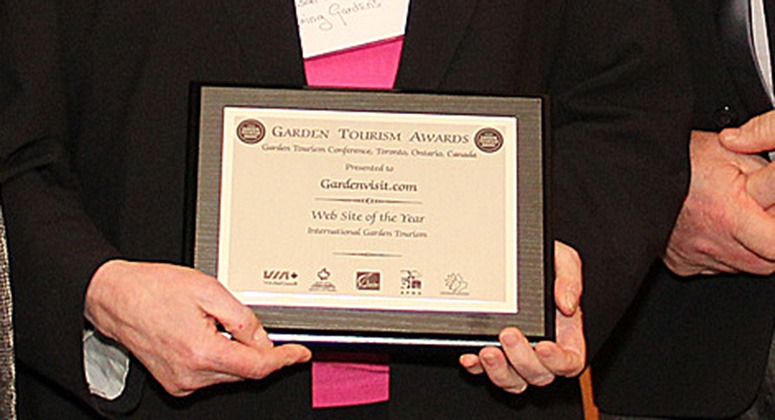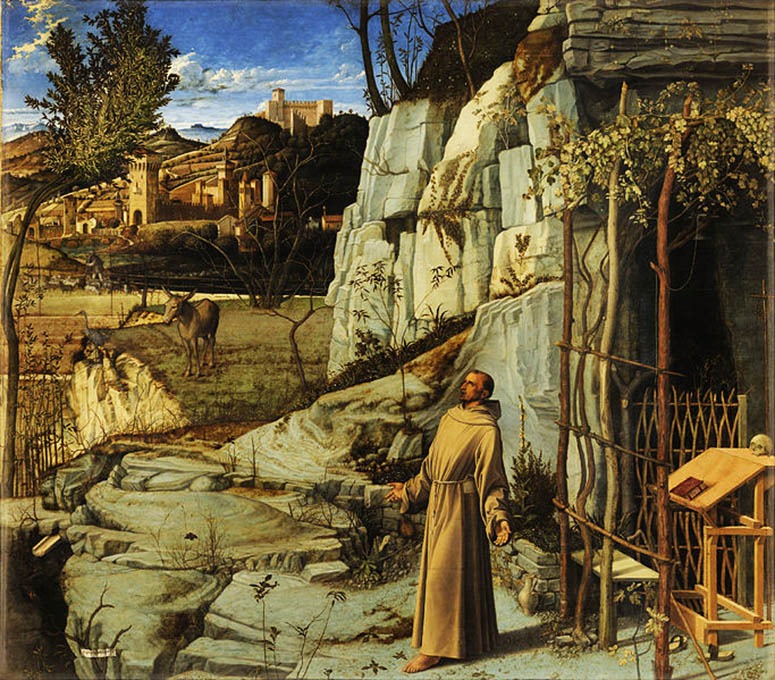 The enclosure on Vulture Peak Rajgir, India is believed to the be the place where the Buddha delivered the teaching recorded in the Heart Sutra. It contains the famous lines:
The enclosure on Vulture Peak Rajgir, India is believed to the be the place where the Buddha delivered the teaching recorded in the Heart Sutra. It contains the famous lines:
Form is emptiness, emptiness is form
Emptiness is not separate from form, form is not separate from emptiness
Whatever is form is emptiness, whatever is emptiness is form
The phrasaeology is meant to induce meditation. ‘Emptiness’ (Śūnyatā) may be interpreted in relation to the Buddhist concept of non-self (Anatta). Nothing we see has a separate ‘self’. Everything is inter-connected. The lines embody a paradox and this may be deliberate – because there is so much about the nature of the universe which cannot be understood. My own understanding of the lines is as follows:
– objects appear to have form but, because they are connected to everything else, this is an illusion
– the ‘everything else’ to which objects are connected can only be perceived through forms
This gives the lines from the Heart Sutra a relationship with Plato’s Theory of Forms and with the modern distinction between particulars and universals. We might say that universials are known only from particulars and that particulars are understood only when they can belong to universal categories. The favourte example is cats (see Fig 1). We only know the universal ‘cattiness’ through particular examples and we only know that particular cats ARE cats because of our acquiaintance with the universal form of cats.
Assuming I have interpreted the Buddha and Plato correctly, I am more attracted to the Buddhist version. Plato conceived the forms as eternal and unchanging. For a landscape architect or garden designer this is unappealing. It implies that all possible forms and designs already exist. The Buddhist version gives important positions both to the form which a designer ‘assembles’ and to the inter-connected cosmos (I almost wrote ‘compost’) from which the elements are drawn – and to which they will return. Forms have no ‘self’; they change every instant; they are impermanent (annica). Modern science confirms that everything is in flux. We notice it more in outdoor than indoor environments. With time the fourth dimension, landscape design appears to be a four-dimensional art.
The photo is from Wikipedia, with thanks. The design uses one of the primary Platonic forms: the square. Compare it with the photo of St Francis, below. Monasticism was a Buddhist idea and the monks seem to belong to the Axial Age, of the Buddha, Plato, Confucius and the author(s) of the Old Testament. Or do they belong to an even earlier age when India rishis meditated in forests, caves and mountain retreats? And why was it such a great period in the history of philosophy and religion? Should philosophers and religious leaders – and landscape designers – work in the great outdoors, instead of in fusty musty offices? Yes. Form is emptiness and emptiness is form.
Lynn Townsend White, environmental ethics, Christianity and Buddhism
I have mentioned Lynn Townsend White several times in this blog without, I am sorry to say, having read his 1966 article (see comments re Buddhism and re Christianity). It is available online and I recommend it The Historical Roots of Our Ecological Crisis Lynn White, Jr. As a historian, he is in the same league as Lewis Mumford and Sigfried Giedion but is field of view is wider, because he is a historian of ideas with an interest in the environment, rather than the other way about. Here is the famous passage from White’s paper, in bold, with the sentences which precede dnd follow it in italics:
To a Christian a tree can be no more than a physical fact. The whole concept of the sacred grove is alien to Christianity and to the ethos of the West. For nearly 2 millennia Christian missionaries have been chopping down sacred groves, which are idolatrous because they assume spirit in nature.
What we do about ecology depends on our ideas of the man-nature relationship. More science and more technology are not going to get us out of the present ecologic crisis until we find a new religion, or rethink our old one. The beatniks, who are the basic revolutionaries of our t ime, show a sound instinct in their affinity for Zen Buddhism, which conceives of the man-nature relationship as very nearly the mirror image of the Christian view. Zen, however, is as deeply conditioned by Asian history as Christianity is by the experience of the West, and I am dubious of its viability among us.
Possibly we should ponder the greatest radical in Christian history since Christ: Saint Francis of Assisi. The prime miracle of Saint Francis is the fact that he did not end at the stake, as many of his left-wing followers did. He was so clearly heretical that a General of the Franciscan Order, Saint Bonavlentura, a great and perceptive Christian, tried to suppress the early accounts of Franciscanism. The key to an understanding of Francis is his belief in the virtue of humility–not merely for the individual but for man as a species. Francis tried to depose man from his monarchy over creation and set up a democracy of all God’s creatures.
With this in mind, it is heartening that the new Pope has taken the name Francis. Pope Francis and St Francis of Assisi are the best hopes for Environmental Christianity – and possibly for the world environment. If Lynn White is correct that Christian beliefs underlie the attitude to the environment of Post-Christians and Non-Christians around the world, then a re-orientation of Christianity around St Francis could contribute much to ‘saving the planet’. Let’s hope this will include a new attitude to birth control. If the catholic church does not want to use modern technology for this purpose then, as in old Tibet, it could be done by having a very large population of non-breeding monks and nuns. Like St Francis, they could love animals. White went on to write that
Both our present science and our present technology are so tinctured with orthodox Christian arrogance toward nature that no solution for our ecologic crisis can be expected from them alone. Since the roots of our trouble are so largely religious, the remedy must also be essentially religious, whether we call it that or not. We must rethink and refeel our nature and destiny. The profoundly religious, but heretical, sense of the primitive Franciscans for the spiritual autonomy of all parts of nature
may point a direction. I propose Francis as a patron saint for ecologists.
Environmental Buddhism, landscape architecture and the Gyama Valley mining disaster in Tibet
I have been reading about Buddhist environmentalism recently. The divergent views can be summarised as follows:
- Many western commentators believe that Buddhism is a wholly environment-friendly faith, because of the belief in the ‘oneness’ of the world.
- Some western commentators (notably Ian Harris) argue that there is scaracely any basis for an environmental ethic in Early Buddhism, because it is a nihilistic faith with a soteriological emphasis on escaping from this world, rather than trying to improve it.
- The Dalai Lama and many other Buddhist leaders are wholehearted supporters of environmental ethics and see the ideas as inherently Buddhist.
In reading about the Dalai Lama’s views I came across this comment: “Now, environmental problems are something new to me. When we were in Tibet, we always considered the environment pure. For Tibetans, whenever we saw a stream of water in Tibet, there was no question as to whether it was safe for drinking or not. However, it was different when we reached India and other places. For example, Switzerland is a very beautiful and impressive country, yet, people say “Don’t drink the water from this stream, it is polluted!”… I remember in Lhasa when I was young, some Nepalese did a little hunting arid fishing because they were not very much concerned with Tibetan laws. Otherwise there was a real safety for animals at that time. There is a strange story. Chinese farmers and road builders who came to Tibet after 1959 were very fond of meat. They usually went hunting birds, such as ducks, wearing Chinese army uniform or Chinese clothes. These clothes startled the birds and made them immediately flyaway. Eventually these hunters were forced to wear Tibetan dress. This is a true story! Such things happened, especially during the 1970’s and 80’s, when there were still large numbers of birds. Recently, a few thousand Tibetans from India went to their native places in Tibet. When they returned, they all told the same story. They said that about forty or fifty years ago there were huge forest covers in their native areas. Now all these richly forested mountains have become bald like a monk’s head. No more tall trees. In some cases the roots of the trees are even uprooted and taken away! This is the present situation. In the past, there were big herds of animals to be seen in Tibet, but few remain today. Therefore much has changed.”
Just after reading this passage I heard of the mining disaster in the Gyama Valley (30 March 2013) in which 83 people died. This led me to look for photographs of forest clearance in Tibet, to see if this could be the cause of the problem, since deforestation so often causes erosion and flooding. I could not find any photographs, so this blog post lacks an illustration. Compared to most of the world’s religions, Buddhism has the great advantage of accepting endless change (anicca) as a fundamental characteristic of the universe and of Buddhism. Islam, by way of contrast, takes the Quran as having been passed from God to Gabriel to Muhammad. This allows some scope for new interpretations (eg in the Hadith) but none for change. Islam is fortunate in having a good base for an environmental ethic. In my view, Buddhism is also in a strong position in this regard and I hope that the reviving popularity of Buddhism in China will encourage the development of environmental ethics everywhere – and of a Buddhist approach to landscape architecture – and mining operations are a special opportunity. Christians have been working at the problem of developing an environmental ethic but have been handicapped by Lynn White’s critical stance.
See the Wiki entry on Religion and environmentalism. Religions often find it difficult to come together but environmentalism offers great opportunities in this regard. Because ‘The Environment’ was not a problem in The Axial Age there are relatively few historical positions which need to be defended.
Gardenvisit.com wins 2013 Award for Best Garden Tourism Website
 We were delighted to receive the 2013 Website of the Year Award. It was one of the Canadian and International Awards handed out during the Garden Tourism Conference in Toronto, Canada. The Garden Tourism Awards are presented to organizations and individuals who have “distinguished themselves in the development and promotion of the garden experience as a tourism attraction. Recipients travelled from across North America and as far away as Japan, France, Portugal, Italy, and Australia”.
We were delighted to receive the 2013 Website of the Year Award. It was one of the Canadian and International Awards handed out during the Garden Tourism Conference in Toronto, Canada. The Garden Tourism Awards are presented to organizations and individuals who have “distinguished themselves in the development and promotion of the garden experience as a tourism attraction. Recipients travelled from across North America and as far away as Japan, France, Portugal, Italy, and Australia”.
“It is an honor to be part of the international community that has established an awards program to recognize the invaluable contribution the world’s outstanding garden experiences make, not only in terms of environmentally friendly and sustainable tourism, but also in terms of the equally important intangible benefits that nature brings to the soul,” said Alexander Reford, Chair of the Canadian Garden Tourism Council as he handed out the Awards. Michel Gauthier, Conference Chair, closed the event by saying, “According to Richard Benfield, authorof ‘Garden Tourism’, more people visit gardens annually in the US than visit Disneyland and Disneyworld combined, and more than visit Las Vegas in any given year. Given those impressive statistics, we’re certainly on the right track as we recognize the country and the world’s finest garden experiences in this vibrant, thriving and rapidly growing segment of the international tourism market.” The inaugural Garden Tourism Awards were presented at the 2011 Garden Tourism Conference held in Toronto. To view past winners, visit: www.gardentourismconference.com and click on the ‘media’ tab. In the spirit of highlighting Canada and the world’s most dynamic garden experiences and GardenTourism’s limitless potential, the Canadian Garden Tourism Council, in consultation with a Canadian and international jury network, proudly announce the 2013 recipients of the Garden Tourism Awards.


Pope Francis and the green environment
 Welcome to Pope Francis. The early news is good: his habits include opposing the government of Argentina, walking to work and cooking his own food. And his choice of name is presumably after St Francis of Assisi. The child abuse scandals should have brought the Roman Catholic Church to its knees, begging forgiveness, but it would be something to have a Pope who cared about the birds and the flowers and the environment. To set against this, he is said to be as much against condoms, married priests and gay clergy as his immediate predecessor. For me, one of the most terrible aspects of Catholic Child Abuse is the reflection that if they have done this with all the communications and transparency of the twenty-first century, then what else have they done over the centuries? They have always taken young boys into monasteries and I recall that Charlemagne was much concerned about the prevelance of homosexuality in monasteries. For a lively debate on these issues see: http://www.intelligencesquared.com/admin/past-event-3/
Welcome to Pope Francis. The early news is good: his habits include opposing the government of Argentina, walking to work and cooking his own food. And his choice of name is presumably after St Francis of Assisi. The child abuse scandals should have brought the Roman Catholic Church to its knees, begging forgiveness, but it would be something to have a Pope who cared about the birds and the flowers and the environment. To set against this, he is said to be as much against condoms, married priests and gay clergy as his immediate predecessor. For me, one of the most terrible aspects of Catholic Child Abuse is the reflection that if they have done this with all the communications and transparency of the twenty-first century, then what else have they done over the centuries? They have always taken young boys into monasteries and I recall that Charlemagne was much concerned about the prevelance of homosexuality in monasteries. For a lively debate on these issues see: http://www.intelligencesquared.com/admin/past-event-3/
I love the use of an ancient symbol (white smoke) to anounce Pope Francis’ election, and though not seriously worried about this contribution to global warming, we have to take an interest in the symbolism of smoke in relation to the Christianity’s lack of an environmental ethic.
Garden tourism: ‘Is London the World’s Gardening Capital?’
I am a Londoner – and, with understandable bias, regard London as the capital city of:
- world gardens,
- garden design
- gardening
As argued in the above video, the reasons for this are both geographical and historical. Britain was emerging from the Pleistocene when horticultural techniques were devised (about 12,000 years ago) and they did not reach Britain until c3,800 BC. The art of making pleasure gardens came to London with the Romans, ended when they left and resumed when the Normans invaded England in 1066. Since then, there has been a steady advance in the popularity of gardening. Long may it continue! Britain is always likely to have a hard time competing with the Mediterranean countries for beach holidays – but it has very considerable opportunities for developing garden tourism. We were delighted to hear of the 2013 Garden Tourism Conference to be held in Toronto, Canada, in March – and have entered the Gardenvisit.com Website in hopes of receiving an award in the Garden Tourism Website category. Further information on the London Gardens Walk – and free routemaps.

